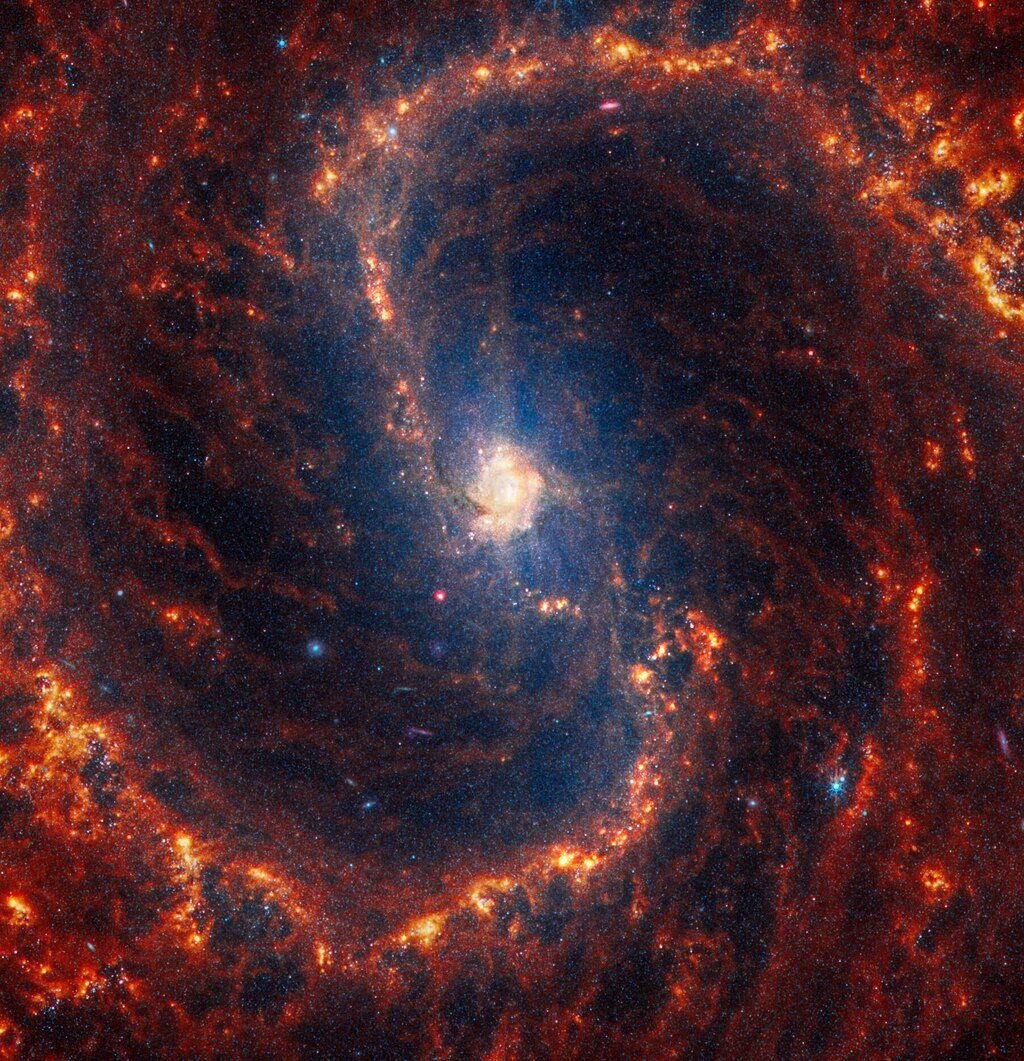NGC 4535 (weic2403r)
(c) NASA, ESA, CSA, STScI, J. Lee (STScI), T. Williams (Oxford), PHANGS Team, CC BY 4.0
Autor/Urheber:
NASA, ESA, CSA, STScI, J. Lee (STScI), T. Williams (Oxford), PHANGS Team
Größe:
1803 x 1869 Pixel (1450564 Bytes)
Beschreibung:
This spiral galaxy was observed as part of the Physics at High Angular resolution in Nearby GalaxieS (PHANGS) program, a large project that includes observations from several space- and ground-based telescopes of many galaxies to help researchers study all phases of the star formation cycle, from the formation of stars within dusty gas clouds to the energy released in the process that creates the intricate structures revealed by Webb’s new images.NGC 4535 is 50 million light-years away in the constellation Virgo.Learn more about what can be seen in this vast collection of Webb images
here.[Image description: Webb’s image of NGC 4535 shows a densely populated face-on barred spiral galaxy anchored by its central region, which has a light orange haze. The galaxy’s core is centred and connected by an almost vertical bar structure to the galaxy’s two prominent spiral arms, which appear to rotate clockwise, forming an elongated S shape in shades of orange.]
Weitere Informationen zur Lizenz des Bildes finden Sie hier. Letzte Aktualisierung: Mon, 03 Jun 2024 09:06:16 GMT
Relevante Bilder
Relevante Artikel
NGC 4535
NGC 4535 ist eine Balken-Spiralgalaxie vom Hubble-Typ SAB(s)c im Sternbild Jungfrau auf der Ekliptik, die schätzungsweise 85 Millionen Lichtjahre von der Milchstraße entfernt. Die Entfernungsmessungen basierend auf den Radialgeschwindigkeiten stimmen nicht mit den rotverschiebungsunabhängigen Entfernungsschätzungen von 51 ± 12 Millionen Lichtjahren überein. Sie ist Teil des Virgo-Galaxienhaufens, einer Ansammlung von Galaxien, die alle durch ihre gegenseitige Anziehungskraft zusammengehalten werden.
Weil die Galaxie in kleineren Teleskopen leicht zu übersehen ist, wird sie manchmal "Lost Galaxy" genannt. Dieser Spitzname geht auf einen Artikel des Amateurastronomen Leland S. Copeland aus den 1950er-Jahren zurück.
.. weiterlesen


